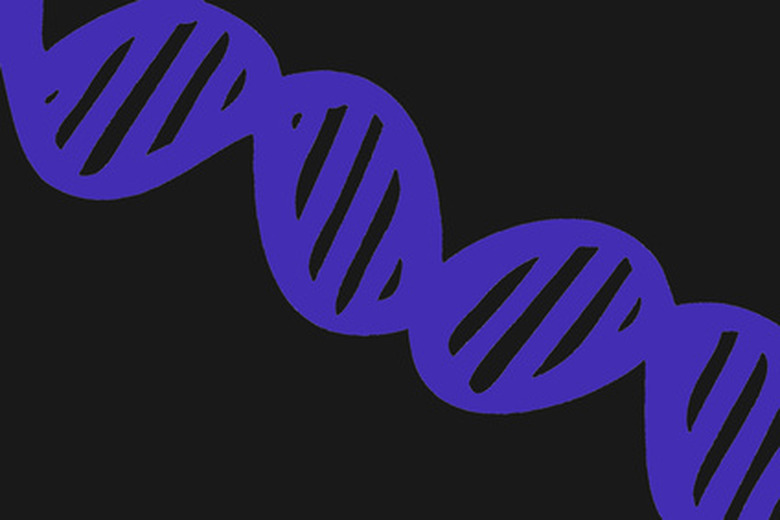How To Make DNA Models Using Paper
DNA, which holds the genetic code for any living thing, has a structure known as the double helix. The spines of the twisted ladder structure are composed of alternating sugar and phosphate molecules. Between them, rungs composed of pairs of four different nucleic acids stretch between the sugar molecules on the spines. A paper model of a DNA molecule might be composed of pieces cut from a template that can be fitted together and taped to form the double helix. It makes a good classroom demonstration item and is also quite attractive in form.
Step 1
Print out the DNA model templates. The template will have pieces that represent each component of the DNA structure. Each piece will be drawn so that it only fits into certain other pieces, just the way certain DNA components only combine with other ones. Cut out the separate pieces of the templates.
Step 2
Use the template cutouts to transfer the shapes onto colored construction paper or cardstock. Assign a specific color to one type of piece so that each shape has its own color. Alternatively, you can print out the template in color and use the template pieces themselves.
Step 3
Cut out the pieces from the colored paper. If you like, you can laminate the paper before cutting out the pieces to make your resulting model more durable and shiny.
Step 4
Tape the pieces together according to their shapes and also according to any instructions that may accompany the templates. For example, there may be tabs on the pieces that fit into squares on the connecting pieces. Make sure to gradually twist the ladder that is formed to represent the double helix shape.
Step 5
Attach smaller lengths of double helix structures together to form a long double helix. Attach string to one end and suspend it from the ceiling.
Things Needed
- DNA model template
- Construction paper or cardstock
- Scissors
- Tape
- String
TL;DR (Too Long; Didn't Read)
You can label the components of the DNA model before the pieces are assembled.
Some templates have only four pieces: two ladder spine pieces and two separate ladder rung pieces from which many copies are made. This fairly elementary style template is good for younger children learning about DNA.
Other templates have six different pieces representing the sugar and phosphate of the spines and the four nucleic acids that make up the rungs. Each of these pieces is copied many times. This latter type of template is more appropriate for advanced students.
References
Cite This Article
MLA
Tolliver, Karren Doll. "How To Make DNA Models Using Paper" sciencing.com, https://www.sciencing.com/make-dna-models-using-paper-6508648/. 24 April 2017.
APA
Tolliver, Karren Doll. (2017, April 24). How To Make DNA Models Using Paper. sciencing.com. Retrieved from https://www.sciencing.com/make-dna-models-using-paper-6508648/
Chicago
Tolliver, Karren Doll. How To Make DNA Models Using Paper last modified August 30, 2022. https://www.sciencing.com/make-dna-models-using-paper-6508648/
